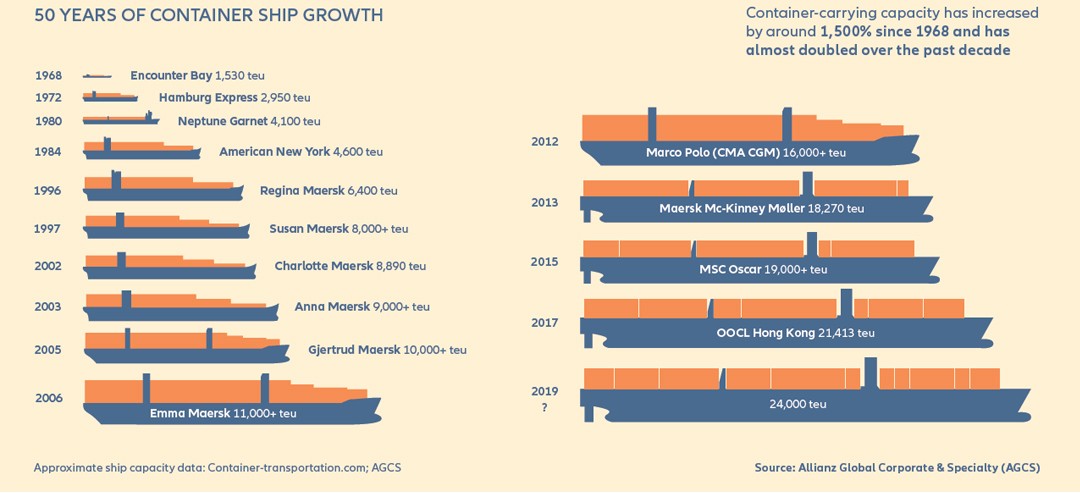Ocean ships too big?
The International Transport Forum (an organization operating within the OECD) has for years been warning about the size of container ships which they consider are too large.
Following the blockade of the Suez Canal, the debate entered the public domain, leaving serious doubts on the balance between pros and cons regarding the size of these vessels. According to an analysis by Allianz, the number of 20-foot containers that ships can transport has increased by 1500% over the past 50 years. In 2006 there was a decisive leap when Maersk introduced the first mega-ship which could carry about 15 thousand containers, doubling the previous record. To date, there are about 133 ships with a carrying capacity of between 18 and 24 thousand containers. This development is mainly due to the economy of scale: the use of a single ship instead of two to transport the same cargo saves fuel, significantly reduces the cost of transport per container and reduces the environmental impact of the ship. However, there are also negative aspects, namely the risk of accidents due to the greater risk of losing part of the load because of bad weather, having a larger surface area and consequently more height, and greater manoeuvring difficulties, especially in the narrowest channels such as the Suez and Panama canals. Furthermore, only a few companies own all these giants of the sea, and they can easily meet around a table to define tariffs and service protocols together.
At the same time, there are not very many ports that could be widened and deepened to accommodate such ships and offer shore services and efficient connections. In addition to these complications, we must consider the delocalisation of production with respect to where the consumption will take place, this concerns not only low-tech products, but increasingly semi-finished products. For example, to put together an iPhone, Apple has to count on prompt supplies from 49 countries. Pfizer vaccine has 5,000 suppliers located around the world. It can therefore be said that international economic integration requires efficient supply chains and the only apparent answer at the moment is the use of mega ships.


